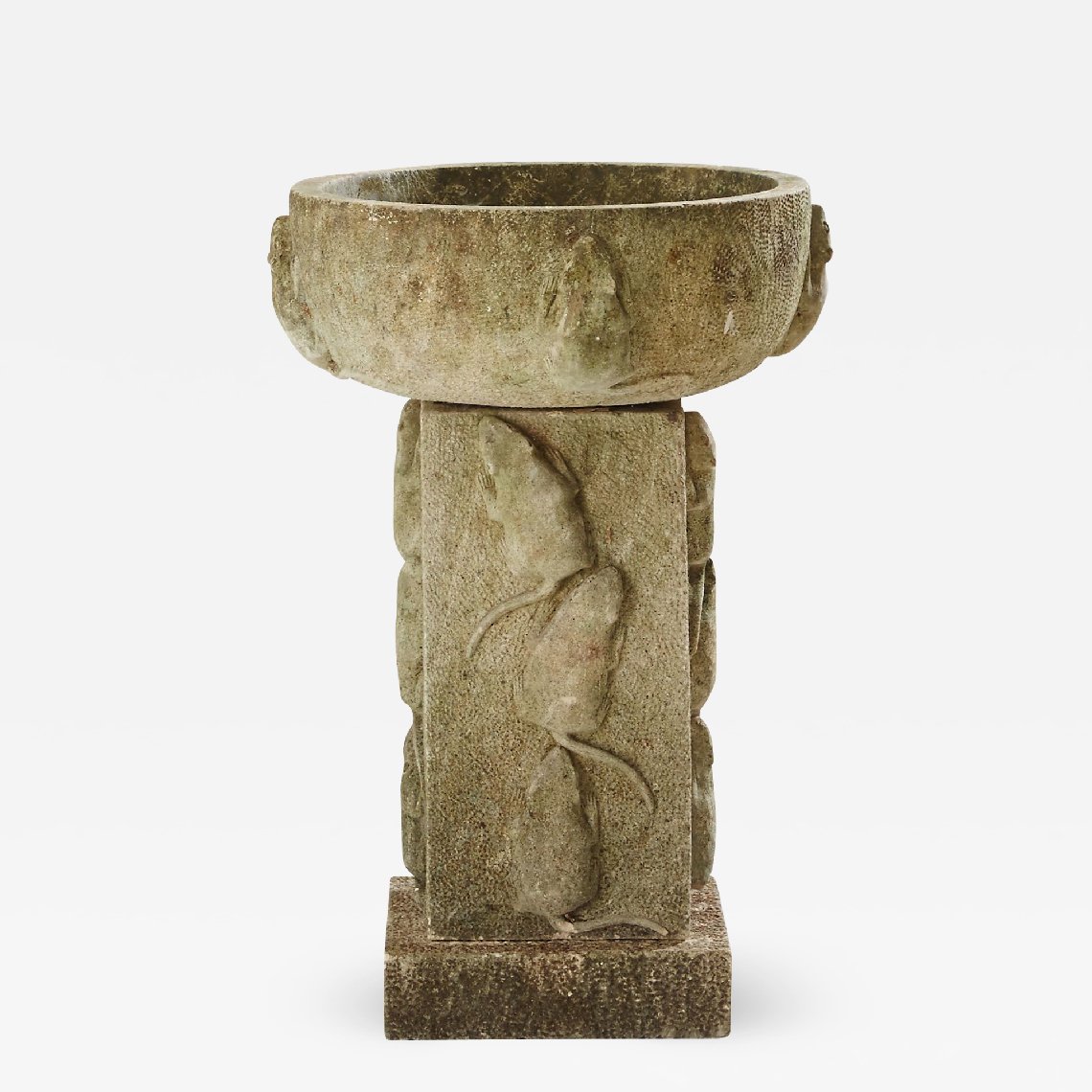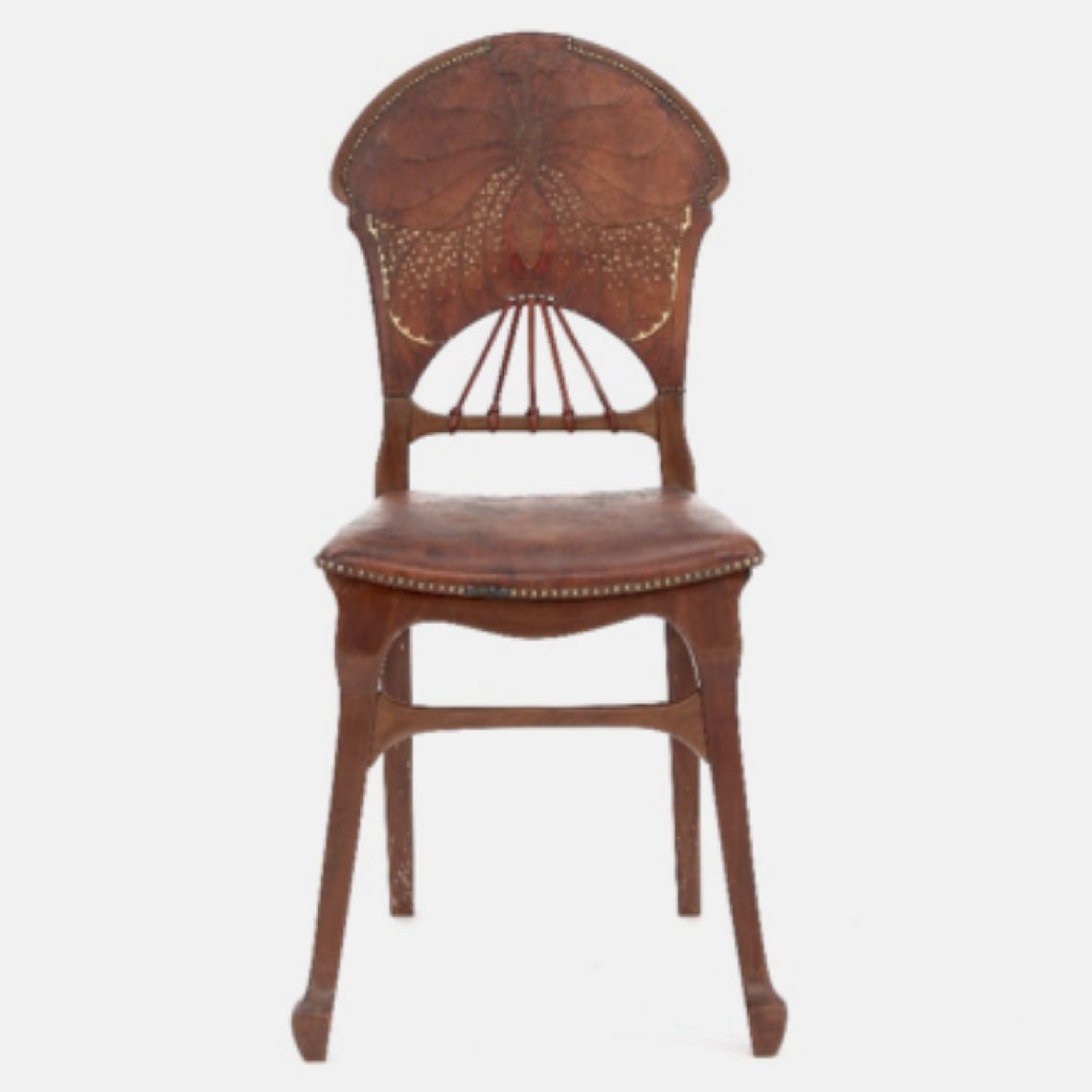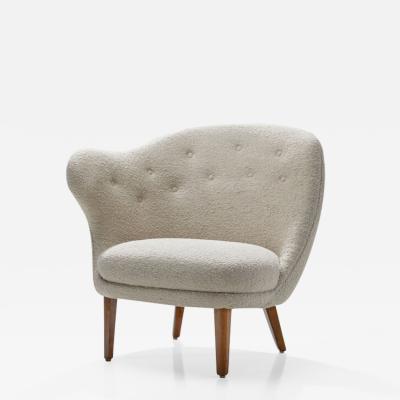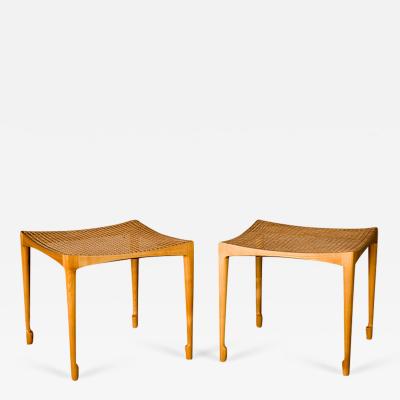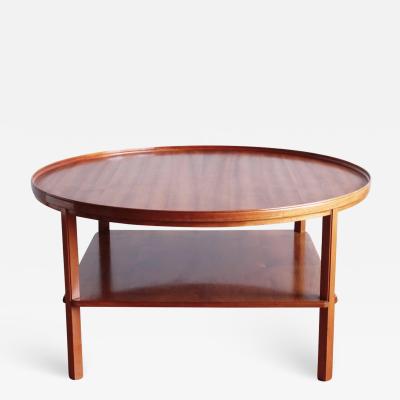Dealers & Designers: In the Know with Lawton Mull and Story Street Studio's Lizzie Bailey
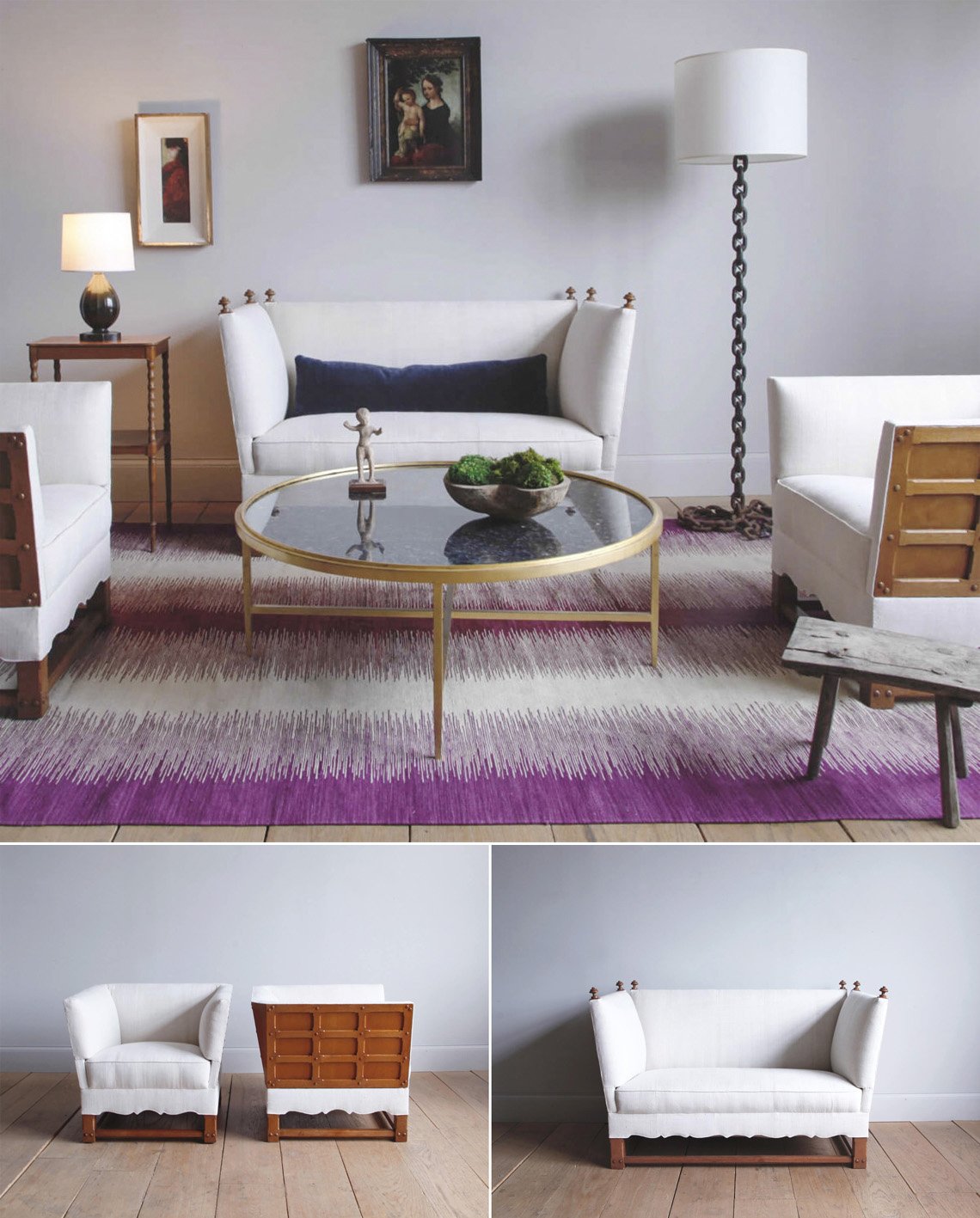 |
Lizzie Bailey, interior designer at Story Street Studio chose these pieces as some of her favorites from Lawton Mull, and dealers Cordelia Lawton and Patrick Mull had this story to tell: “These Elias Barup chairs and settee from "The Spanish Set" are rare, and to us such a perfect example of what we love in early 20th century Scandinavian design. They're clearly inspired by English knole sofas and by the wood panelling in English homes of the same era, but the proportions are more modest (the original knole sofa was probably intended as a throne for two) and the ornamental details are more gestural than ostentatious. The best Scandinavian design is about honoring the quality of the materials and craftsmanship, and the comfort of the user. When we first acquired this set, they were covered in a worn and stained damask and the woodwork was bleached by the sun. We recovered them in a vintage hemp linen and restored the warmth of the wood with a patient hand.“ |
Welcome to a new series from The Gallery at 200 Lex powered by Incollect – Dealers & Designers: In the Know. Throughout the series we will be pairing experts from both the sides of the antiques trade together to bring you the inside scoop. The dealers who source exceptional vintage and antique furnishings, and the designers who utilize those pieces in their interiors will each provide their insights and expertise.
We're chatting today with dealers Cordelia Lawton and Patrick Mull of Lawton Mull, and designer Lizzie Bailey from Story Street Studio. We hope you enjoy their unique perspectives. Please let us know if you have a burning question for a dealer or a designer!
 |
 |  | ||||
Cordelia Lawton and Patrick Mull, Lawton Mull | Lizzie Bailey, Story Street Studio | ||||
How did you decide to become dealers? We met at the Iowa Writers' Workshop as novelists-in-training. Soon after meeting, we discovered a shared joy in telling stories not just with words, but with art and furniture. Our wedding was the first event we designed, and the feedback from our guests was so enthusiastic that we realized our greatest gift was in creating interesting interiors where people feel comfortable and happy. We could not resist buying beautiful things, so we became adept at hunting for them. The more we learned, the more we wanted to know. That is how Lawton Mull came into existence. Your inventory includes a variety of different places of origin and time periods — what makes it all “Lawton Mull’? When we started out as dealers, we imagined we were buying for a client with a wide-ranging and insatiable appetite for beauty. He understood that genuine luxury had nothing to do with price, and everything to do with its quality and rareness. He wasn't afraid of patina or evidence of use; in fact, visible wear and repairs added to the value and beauty of each thing. That's still how we hunt for new inventory. It's much more time-consuming than specializing in one particular period or region, but for us it's also much more rewarding. A large amount of your inventory is Scandinavian. Why are you drawn to that? You're right. We love Scandinavian furniture of the early 20th century — the decades between the world wars especially, but not exclusively. It has a wonderfully timeless presence because those designers were modernizing older forms. Also, the craftsmanship of the great cabinetmakers who fabricated these designs can't be beat. Tell us about a time when you had a piece restored that took it from something no one would look at twice, to a masterpiece. There was a living room set — a four-seat sofa and a two-seat settee — that we bought for next to nothing at a fire sale. They looked as if they had literally survived a fire, and then a flood. But they had a marvelous profile. While we were working on them with our upholsterer, we discovered that they were by a great American mid-20th century designer. We replaced the destroyed foam with feathers and down and the stained bouclé with mohair velvet and in doing so revived the handsomeness of their design. What was your most memorable project with a designer? We've been very fortunate to work with some of the most gifted designers and architects out there. These artists have unique vision, so it's always wonderful to be part of the process. We're also lucky to have clients who are not in the design trade, but who happen to have a good "design sense", curiosity, and imagination. And we love to help them take that next step to help a room find its voice, so to speak. What are some of your favorite events or places to purchase pieces for Lawton Mull? We travel to Scandinavia, of course, always revisiting favorite sources and searching for new ones. We go to all of the important art and design fairs in the city and sometimes in Europe when we can. We buy mostly in Europe, but that doesn't stop us from looking at sales in the U.S. What can we look forward to seeing in the upcoming months? We're fabricating a few new designs that we're very excited about. We particularly love making one-off pieces incorporating unique materials. We're also about to start offering sustainably produced, household luxuries such as linens and tableware, partnering with makers who specialize in beautiful healthy materials, to be a source for quality of life in all ways. | What made you decide to go into decorating or becoming a designer? I started out in magazines and my first job was as a market editor at a shelter magazine. While reporting on design trends and interviewing designers, I realized I wanted to be on the other side, designing, so I left and went to design school. What draws you to an antique or a piece of vintage design? Often an antique or vintage piece is the thing we look for when we need to break up a scheme or bring in something unexpected that’s missing. That could be gravitas from a serious piece for a formal room that needs something old, it could be a bit of glamour (often easily found in a great vintage light fixture or mirror), or it might be a sculptural element from something with wonderful lines. Do you try to follow the tastes of your clients, or do they largely hire you for your taste? Both! All our projects should have a common thread, which is our taste. But each will reflect the particular leanings of our clients. I think ideally we take our client’s taste and expand it. What is one of the biggest misconceptions clients have regarding working with antiques? Some clients fear antiques aren’t durable or are too precious to hold up to daily use or the wear-and-tear of family life. Of course, for certain fine pieces that can be true, but some items wear even better than new pieces, such as a dining table that already has decades (or centuries!) of patina or an antique rug. What resources do you use to discover new dealers and products? Antiques shows are a great way to find new dealers, especially now that a lot of established shows feature dealers specializing in a variety of styles and eras. There’s more of a mix. And Instagram is increasingly becoming a great way to see things, especially from international dealers — when designers tag their sources, it can open up a new world of hunting! What would your dream room to furnish with Lawton Mull be? An entire, modernist mountain house full of Scandinavian antiques! Shearling upholstered chairs galore. Which Lawton Mull pieces would be your dream piece for your home and why? Can’t pick just one! I’ve always lusted after one of these Ole Wanscher armchairs. I love the insouciant, wavy back slats on an otherwise very simple chair. It’s so comfortable and perfectly proportioned.
AND since I’ve been working from home, like everyone, I’m dreaming of a proper desk with a massive work surface. This Danish modern stunner is perfection.
|
 |























